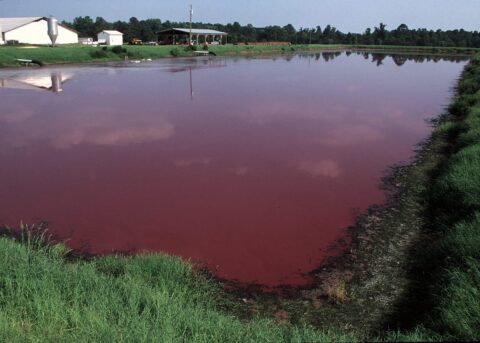Explainer
The Causes and Effects of Deforestation, Explained
Climate•8 min read
Explainer
Manure from agricultural operations and livestock farms is the main source from which phosphorus and nitrogen enter surface and groundwater. Rainwater and over-irrigation cause these elements to seep into waterways and groundwater supplies, hence the name runoff. The intense, concentrated nature of factory farms holding thousands of animals in small spaces makes the manure runoffs particularly dangerous for human and animal lives even outside of the factory farming facilities.


Words by Jonathan Carey
Manure from agricultural operations and livestock farms is the main source from which phosphorus and nitrogen enter surface and groundwater. Rainwater and over-irrigation cause these elements to seep into waterways and groundwater supplies, hence the name runoff. The intense, concentrated nature of factory farms holding thousands of animals in small spaces makes the manure runoffs particularly dangerous for human and animal lives even outside of the factory farming facilities.
This also occurs when the manure lagoons and other holding facilities for manure on farms overrun due to storm surges, sustained rain or mismanagement. A runoff event can cause groundwater supplies of local residents to become dangerous to drink, cause the overgrowth of algae in large bodies of water, and lead to fish deaths in rivers and lakes.
When algae begin to grow at a rapid rate they create what is known as blooms, blocking sunlight from entering the water. They can also find there way into pipes blocking water transportation.
When the plants begin to die and decompose in an open water source they suck the water of oxygen creating a zone devoid of oxygen where little to no aquatic life can survive known as “dead zones.” One of the largest such zones sits in the Gulf of Mexico.
Further material:
Sources of Eutrophication. World Resources Institute.